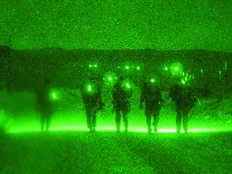Improving User Experience Through Closer Communication
In this scenario, agencies access cloud systems through a managed service instead building on-premises systems. The vendor is responsible for maintenance, which ensures that the systems are continuously modernized and have high availability.
Modernizing IT requires a shift in thinking. Most legacy systems’ management is predicated on acquisition and procurement practices that involve budgeting, soliciting, selecting and validating the vendor and technology prior to strong user collaboration. The new era in tech focuses on the user first.
Instead of writing a manual of requirements, agile approaches promote the concept of simply asking users what they want, then communicating those desires in a way that supports the users’ intended outcomes, thus enhancing user friendliness and creating effective solutions.
Using a similar approach, the Department of Homeland Security ensured the Transportation Security Administration had frameworks that allow developers to hear directly from users, avoiding miscommunication, saving time and improving quality. Bringing the end user and contractor closer together changes the dynamic of federal oversight and complicates existing governance structures, but such change is necessary from a cost-benefit perspective. Maintaining legacy systems is expensive and time-consuming, and new acquisitions prolong the legacy system lifecycle.
DISCOVER: CISA’s greenfield solution is a model for IT modernization in the zero-trust era.
The IT Innovation Lab Enables Continuous Modernization
At TSA, customer-driven development breaks down user needs into smaller, more manageable elements, based on domains and capabilities our agency already supports. When we deploy new features, we do so in small increments, allowing users to quickly adopt the new technology and provide rapid feedback. We make quick updates to systems, and this agility allows us to maximize cost-effectiveness. TSA also uses SaaS technologies, reducing the risk of obsolescence and improving our cost-benefit by consolidating features and putting more configuration control in the user’s hands.
Our shift toward continuous modernization is already yielding benefits. To sustain this shift, we introduced the IT Innovation Lab to accelerate innovation across the enterprise, bringing ideas together and gaining different perspectives on what users need and then experimenting to find the right solution.
Enterprise coordination across TSA is the key to ensuring that all current features are aligned with users’ needs and that future development takes into consideration current technology and enterprise needs. Collaboration allows us to be nimble, scalable and continuously modernized. We have not yet reached our destination, but we are on the right path to making technology more seamless and user-friendly to everyone in the agency.











